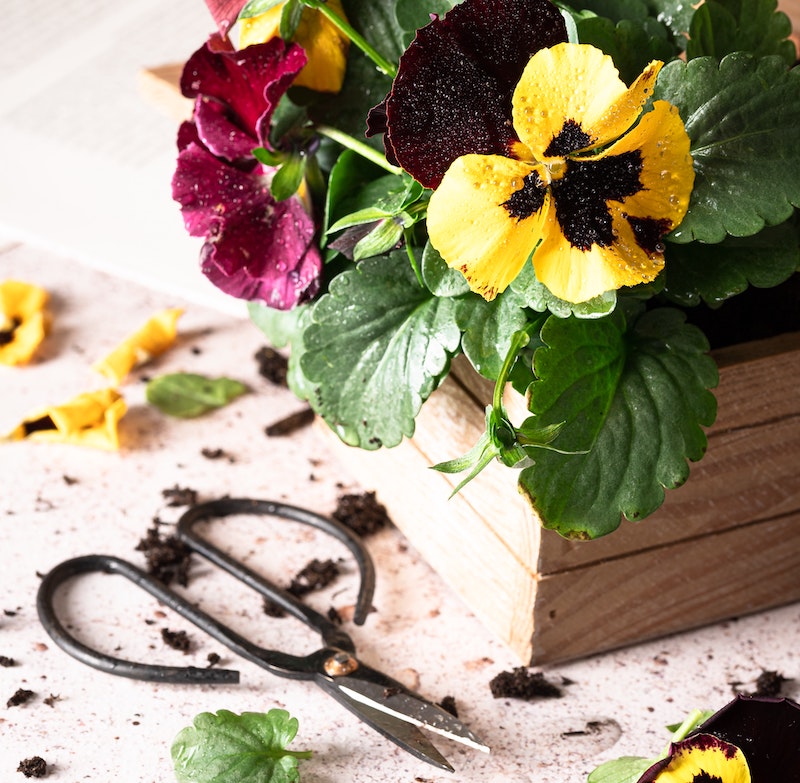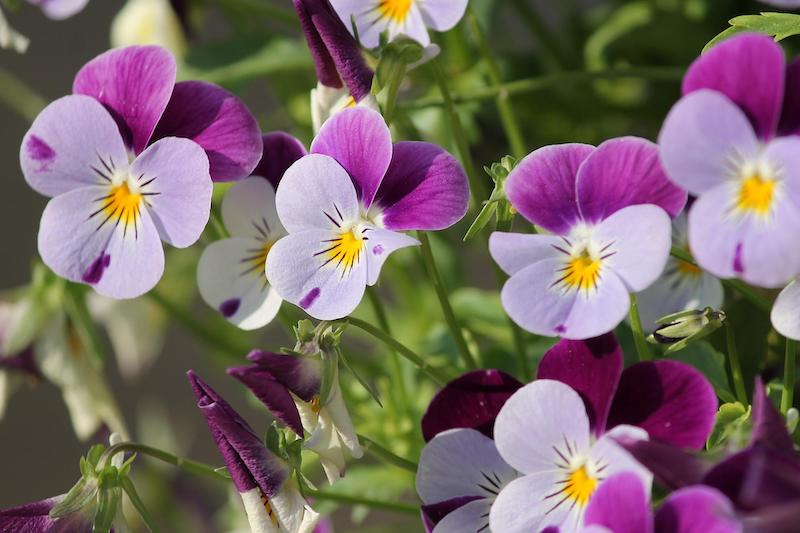Pansies are charming plants with a long season of bi-color blooms. They are also fast growers and thrive in areas with mild summer weather. Also known as Violas, Pansies are easy to grow and do not require much care, but cutting these plants back will help them flourish.
Maintenance pruning keeps Pansies full and bushy. Cutting a plant back to encourage it to keep growing seems counterintuitive, but it works. Pansies can become leggy or straggly, which means the stems become long and lanky, leaving gaps between foliage and flowers. Removing this growth will force the plant to redirect energy into new growth and maintain a more compact form. Learning when and how to prune Pansies will ensure your plants look amazing throughout the growing season.

When to Prune Pansies
Trim Pansies in the spring to remove any damaged or dead growth left over from the winter. Long and leggy sections can be cut back any time during the growing season to encourage full and bushy growth. Inspect the plants and cut back bare sections of stems at any time. Mid-summer is a good time to trim Pansies as the plants may become overgrown.
Cut back flowers as they start to fade to encourage more blooms. This process is known as deadheading and will keep the plant continuously blooming throughout the growing season. You can pinch back new growth at the ends of the stems. Taking a preemptive approach to pruning can prevent the plants from becoming leggy.

Why Prune Pansies
Cutting back overgrowth will keep the plant full and create a more compact form. By pinching back growth or removing the new leaves that emerge at the ends of the stems, the plant will redirect energy into new foliage and flowers on existing parts of the plant, creating a more lush plant.

How to Prune Pansies
Step 1 - Look at the plant for overgrowth or extended sections of stems without much foliage
Cut back bare sections of stems, but cut no more than one-third of the plant at a time.
Step 2 - Remove flowers when they start to fade or show signs of decline
Pinch or trim the stems back to the next set of leaves.
Step 3 - Pinch back or remove new leaves at the end of stems
Removing new growth will prevent the plant from becoming overgrown or leggy.
Step 4 - Cut back growth by no more than one-third
Cutting the plant back too severely can cause stress and loss of energy.
Pansies Pruning Tips
- Prune overgrown or straggly Pansies to rejuvenate growth and create a full and lush plant
- Pinch back new growth to encourage more growth and prevent the plant from becoming overgrown
- Deadhead Pansies or remove spent blooms to encourage more flowers.
 |
Author Alison Cotsonas - Published 08-01-2022 |
